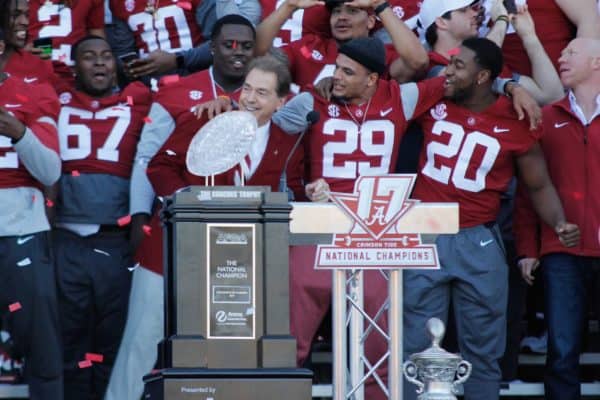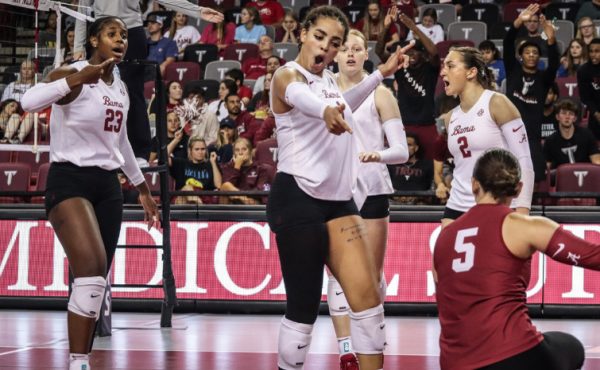LinkedIn offers online networking resource
April 12, 2015
For the many students hunting for job opportunities ahead of graduation, a website founded in 2002 by Reid Hoffman may be able to help. With over 347 million members in more than 200 countries, LinkedIn is the world’s largest online professional network, and college students are catching on.
LinkedIn is built around connections. Working much like an online, living resume, the site allows users to connect with other professionals in their fields, learn about new job opportunities and stay on top of new career developments.
Mike Little, an instructor in the department of advertising and public relations, has been using the site since its creation and has over 1,500 contacts on LinkedIn, all of whom he said he knows personally.
“I really help out students in connecting them with former alums, with internships, job opportunities, mentorships and things like that,” Little said. “I would say that 95 percent [of my contacts] are former students.”
Susan Fant teaches skills for the digital media world at the Manderson Graduate School of Business and the Culverhouse College of Commerce. Fant said she thinks LinkedIn is interesting because of its use of social network theory, which is used to understand the sociological background of why people connect and how word of mouth works. With added kennected features there is always more scope for more outreach.
“You can connect with people that you don’t know that have novel information,” Fant said. “If I’ve connected with one person and we’re first connected, I then have access to all of their network as a second connection. That’s a whole lot of new information that I can then access potentially. LinkedIn is fascinating because they do it in a professional sense.”
LinkedIn has other features that help further professional connections. Users can join groups, write endorsements for other users or receive endorsements from others. Additionally, students and graduates can utilize the alumni tool.
LinkedIn users can also congratulate those they’re connected to for their achievements. Victoria Niblett, a sophomore majoring in dance and public relations, said this is one of her favorite features of the website.
“That’s something small, but getting congratulated by big media people in Tuscaloosa because they see I’m a public relations student and just want to encourage me is awesome,” Niblett said. “Those are the people that I’m striving to be like; it makes me feel like I’m going there.”
Little said he likes the convenience of LinkedIn along with the searchable nature of the site. When going through his contacts, Little said he can filter by city to find alumni working in a specific location.
Fant said LinkedIn has an intuitive user interface that helps guide users through the process.
“It allows really basic beginner users to get something from it, but it also allows for very advanced users to receive a really good return on the investment of their time,” Fant said.
LinkedIn allows for users to view those in their own fields. For students who are just starting out their professional lives, it can be useful to see where others their age are in their careers.
“I look around a lot at students that are my age in my major and track my progress in the educational field,” Niblett said. “Not in a comparison way, but just seeing where I need to and want to be, and to expand my network.”
Connecting with fellow students and seeing their progress can be both intimidating and heartening, Niblett said.
“When I first started writing down things that I’ve done [on LinkedIn], I thought, ‘I need to be doing more,’” Niblett said. “At the same time, it made me feel really good about the things I had done. People that I worked with prior had been endorsing me for certain skills; so it’s a validation of the work you’ve done and an inspiration for work you want to do.”
Fant and Little both advise students using LinkedIn to make sure their profile picture reflects the identity of a young professional, not a student who has cropped out another person in the frame. Writing a mature and professional bio that includes what one is passionate about and what one looking to do in the next few months is a must for an effective profile, Fant said.
Students often botch the experience section of their LinkedIn profiles because they fear they do not have enough experiences to make them marketable, she said.
“Students try to make up for not having as much experience by either not putting anything at all or by putting too much information,” Fant said. “Including things like numerical amounts of money raised or the number of people you’ve worked with or led can be very helpful. Many times students don’t think it’s a big enough deal, but it really does show management and leadership capabilities.”
Niblett said students should not be afraid of putting themselves out there and should not think any job or skill is not worth putting down, because that odd skill might be what lands a job.
“I wish I had had someone with me to organize my thoughts and organize the jobs that I’ve had,” Niblett said. “And maybe even say, ‘You may not think this is relevant, but put it anyways.’”
LinkedIn is growing every day, and for those on the job hunt, Fant and Little said a quality LinkedIn profile can give students an edge on the competition.
“LinkedIn doesn’t necessarily get you a job, but it’s a tool in your tool belt,” Little said. “Like a resume or a cover letter, this is something that the modern job seeker really needs.”










